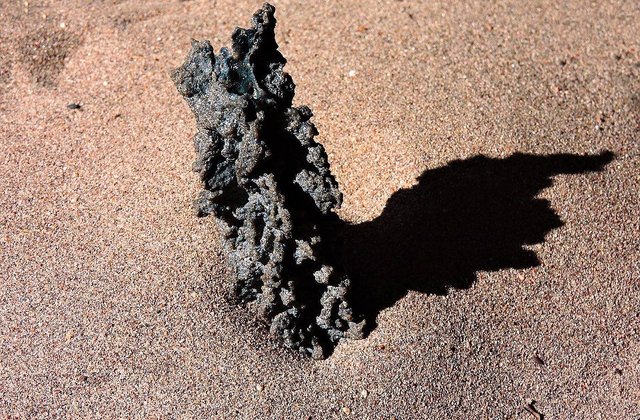What happens when lightning strikes the sand on the beach?
What happens when lightning strikes the sand on the beach?
That so-called fulgurites are formed.

Tubular-shaped structures are created that arise when a beam hits the sand of a beach or a desert, although it can also occur in siliceous rocks. Upon contact with the ground, the electromagnetic pulse increases the temperature of the sand to melt (can exceed 3,272 ºF).
The discharge of electricity is able to penetrate more than one meter in depth and, as if it were conductive thread, melt the grains of sand around it leaving fine hollow cylinders of between 2 and 50 mm in diameter. You can also find twisted, branched and joined tubes forming larger structures or as part of rocks.
The inside of the fulgurites is usually smooth, but sometimes has tiny bubbles, and the outside is covered by grains of sand that have not melted due to heat. The material resulting from the liquefaction and subsequent solidification of the sand or sandstone particles is vitrified silica or lechatelierite. It is usually dark, but bronze, green and white tones also appear. Its appearance resembles that of a small root or narrow stem, but they are rougher to the touch.
Scientists can produce vitrified silica in a laboratory, however, finding them in nature is not easy. They can be found in deserts such as the Sahara, but they are rare because of the rare phenomenon that causes them. Its name comes from fulgur, 'ray' in Latin, and they are also called with the name of petrified ray. In New Jersey one of the largest known, of 2.74 meters was collected.


